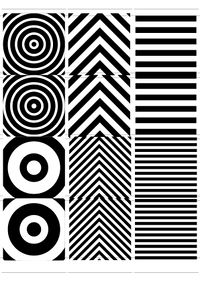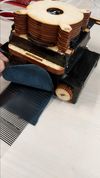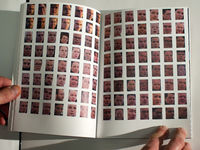Andreas methods 10-04-19
Word count 1500 max.
What have you been making?
In my work I want to explore „brevitas“ in the moving image and bring into a series of semiotics. This exercise is trying to find the „modest“ or „appropriate“ amount of communication. It shall remove decoration, accessories and digression or even add all these redundancies to find the essence. How is simplification or excess changing the visual appearance of content? From which point of the reduction or maximisation of content is distorting the content itself? On the example of translators – like for every other communication that is involving a third party – there is a risk, that para- and nonverbal signs may be terminated or corrupted. In which extent are there changes in the visual communication , that may have great impact on the reception? From ancient times to the modern era the rhetoric has been the binding and constant guideline of communication. Nowadays there is less new in the rhetoric, even though the complexity of content has increased. Also, there seems to be a dominance of the visual in the „screen-“ or „display culture“. The term of „brevitas“ has been explored extensively in verbal/written communication. Also in product design, architecture (baroque vs minimalist design) or visual communication there has been big research on the topic of reduction vs excess.
How did you do it? (method)
1) Maximise – Minimize
Building my own camera within the focal camera workshop enabled me to create images similar to the lenticular method. What would happen if I bring in two subjects into one image? Since I already explored double exposures before my studies I wanted to try this out with a shaped mask behind the photo paper.
I lasercut a stripe-shaped mask that would be placed in front of the Negative. This shape would be movable between to positions. After exposing the first half I would move the striped shape to the second position and expose the missing parts of the negative.
Together with Susanna Fasciolo I made a photo series called “Frown”, depicting portraits of cyclists and people who ride their scooters over the Erasmusbridge. The book consists of cropped images showing faces. At first, the actual topic is not being revealed. You can only see the cropped faces in a grid of 7 x 8 photos per page. Every page consists of two pages (similar to the japanese binding) that are folded, perforated and can – ultimately – be opened on the perforation. The reader is forced to make assumptions on where these photos could have been taken. Have all these people been in one big crowd? Are they at a demonstration? Only by opening the perforation on each page one can find out more about the scene.
2) describe the reading and writing you did and describe how it supported your practice. This may be a discussion of particular texts, or it might be a description of writing and reading methods you adopted and how they helped shape your work. .
In this section you can help us understand how your work comes together on a practical level and talk about possible outcome(s) in the future. These outcome(s) may have changed as your research evolved, describe the decisions you made along the way which resulted in a change of direction, or which resulted in the recognition of a core research strand.
Relation to previous practice
Identify developing practices and theoretical approaches over the last year. This can be very practical: new working methods, new skills &c; describe what such new skills afford.
What do you want to make next?
How does your proposed future research connect to previous projects you have done? Here you can use the descriptions you made during the Methods seminar or make new descriptions.
Why do you want to make it?
Relation to a larger context
Meaning practices or ideas that go beyond the scope of your personal work. Write briefly about other projects or theoretical material which share an affinity with your work. At this juncture, it's simply about showing an awareness of a broader context, which you will later build upon as your research progresses.
References
A list of references (Remember that dictionaries, encyclopedias and wikipedia are not references to be listed. These are starting points which should lead to more substantial texts and practices.) As with your previous essays, the references need to be formatted according to the Harvard method.)
Feel free to include any visual material to substantiate, illustrate or elucidate your ToM. For example use images to reference your work or that of others.
Back to RW&RM Seminar:




